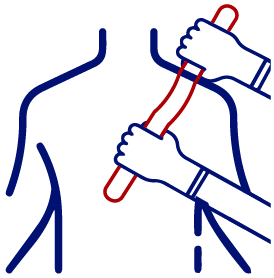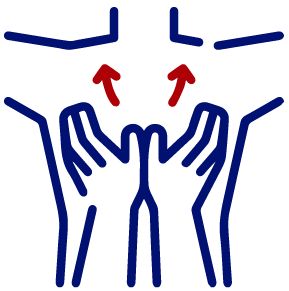
What Is Scoliosis?
Scoliosis is a complex condition that involves a three-dimensional deviation of the spine from its normal alignment. The spine typically has natural curves that allow it to distribute the body’s weight evenly and provide flexibility. However, in individuals with scoliosis, the spine deviates sideways, forming an “S” or “C” shape when viewed from the front or back.
What Are The Symptoms Of Scoliosis?
Understanding and addressing underlying issues related to scoliosis begins with recognizing its symptoms. Here’s an overview of common signs associated with scoliosis:
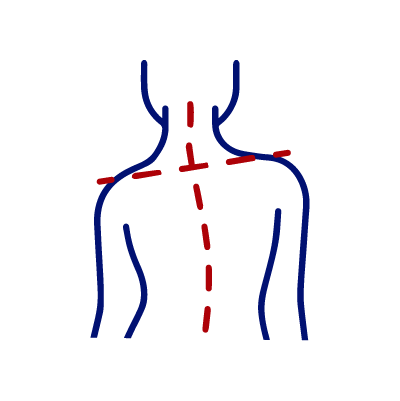
Uneven Shoulders
One shoulder blade appears higher than the other when viewed from the back, creating a noticeable asymmetry.
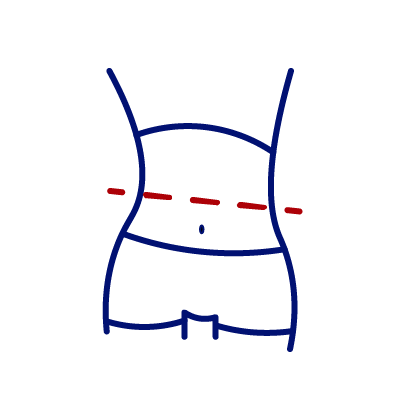
Uneven Waist
The hips or waist may appear uneven or tilted, indicating a lateral curvature of the spine.
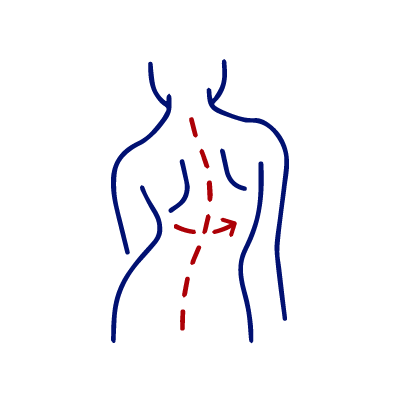
Spinal Rotation
Spine may twist or rotate, causing the ribcage to become more prominent on one side.

Back Pain
Recurrent pain in the back, shoulders, or neck may indicate scoliosis-related strain on muscles and ligaments.
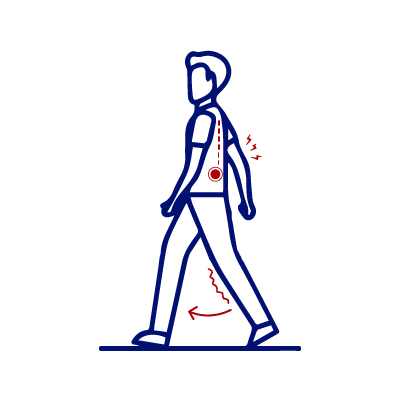
Limited Mobility
Individuals with scoliosis may experience difficulty in bending or twisting their bodies, impacting overall flexibility.

Visible Curvature
In severe cases, the curvature of the spine may be visible when the person bends forward, forming a noticeable "hump" on one side of the back.
Causes And Risk Factors
Scoliosis may arise from diverse causes and risk factors, encompassing injuries to underlying conditions. A comprehensive understanding of these elements is vital for effective prevention and treatment.
What Are The Causes?
The causes of scoliosis can be classified into four main types:
- Idiopathic Scoliosis: The most common type, idiopathic scoliosis, has no clear cause. It often develops during adolescence and may be related to genetic factors.
- Congenital Scoliosis: This type is present at birth and results from abnormalities in the formation of the spine during fetal development. It is often diagnosed early in life.
- Neuromuscular Scoliosis: Conditions such as cerebral palsy, muscular dystrophy, or spinal cord abnormalities can lead to scoliosis. The underlying neuromuscular issues contribute to the spinal curvature.
- Degenerative Scoliosis: Occurs in adulthood due to the degeneration of the spine’s discs and joints. This type is often associated with aging.
The degree of spinal curvature can vary, and in some cases, scoliosis may not cause noticeable symptoms. However, in more severe cases, it can lead to issues such as uneven shoulders or hips, back pain, and difficulty breathing.
What Are The Risk Factors?
- Age: While scoliosis can develop at any age, it is most commonly diagnosed during adolescence when growth spurts occur. Rapid growth may contribute to the progression of the curvature.
- Family History: There is a familial trait component to scoliosis, and individuals with a family history of the condition may have an increased risk of developing it.
- Gender: Adolescent girls are more likely to develop scoliosis compared to boys. However, boys with scoliosis may be at a higher risk of experiencing a more severe progression.
- Neuromuscular Conditions: Individuals with existing neuromuscular conditions, such as cerebral palsy or muscular dystrophy, have a higher risk of developing scoliosis.
- Connective Tissue Disorders: Certain connective tissue disorders, like Marfan syndrome or Ehlers-Danlos syndrome, may increase the likelihood of scoliosis.
- Injuries Or Infections: Traumatic injuries to the spine or certain infections affecting the vertebrae can contribute to the development of scoliosis.
How Is Scoliosis Diagnosed?
In the pursuit of understanding spinal health, healthcare professionals employ a thorough evaluation process, examining various factors to diagnose scoliosis.
- Detailed History And Examination: Thorough medical history and physical examination to assess symptoms and degree of curvature.
- X-Rays And Criteria: X-rays provide a clear image of the spine. Criteria include the Cobb angle measurement to determine the severity of curvature.
- Adams Test: This assessment observes the patient’s forward bending posture to detect spinal asymmetry and rotational deformities.
- Risser Grading: Assesses pelvic growth plate development, aiding in predicting scoliotic progression and guiding treatment decisions.

How Can We Treat Scoliosis?
At Highlands Family Chiropractic, we offer various treatment options for effective pain management and scoliosis treatment. Choose from the following treatments:
Schedule Your Appointment Today
Contact us today to book a free 15-minute consultation with our Chiropractor in Highlands Ranch! We look forward to getting you on the path to optimal health and wellness.



